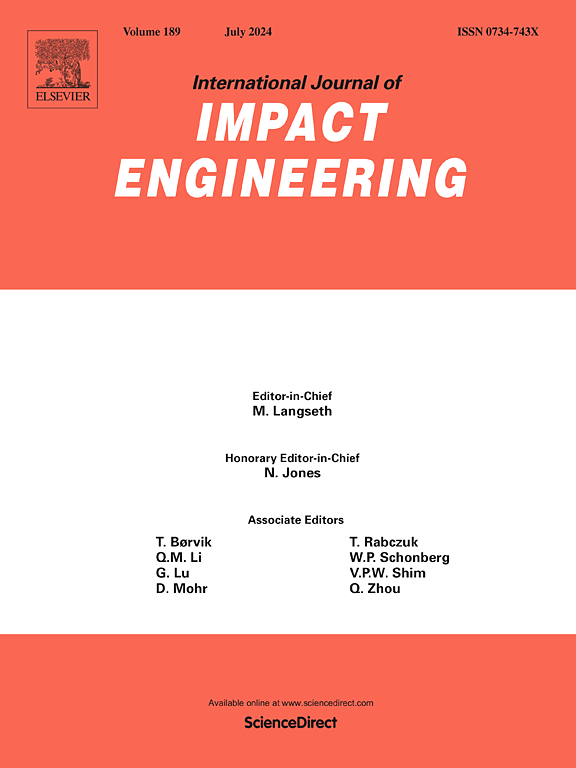High strain rate behaviour of cohesive soils
IF 5.1
2区 工程技术
Q1 ENGINEERING, MECHANICAL
International Journal of Impact Engineering
Pub Date : 2024-11-29
DOI:10.1016/j.ijimpeng.2024.105189
引用次数: 0
Abstract
Soil-filled wire and geotextile gabions are essential components of defensive infrastructure in military bases, leveraging the attenuating properties of soils to safeguard personnel and critical assets against blast and fragmentation effects. However, understanding the behaviour of cohesive soils under extreme loading conditions remains largely unexplored, presenting a crucial knowledge gap for design engineers tasked with developing robust soil constitutive models to address evolving threats. This study investigates the response of cohesive soils, focusing primarily on kaolin clay due to its homogeneity, widespread availability and consistent properties. Through high strain rate experimental testing of kaolin clay specimens, using the split-Hopkinson pressure bar (SHPB) apparatus, both unconfined and confined conditions are explored across varying moisture contents, spanning the spectrum from unsaturated to fully saturated states. The analysis of the experimental results uncovers the strain rate dependence of cohesive soils and identifies distinct phase behaviour for transmitted and radial stresses influenced by factors such as strain rate, moisture content and confinement. Utilising LS-DYNA, and the finite element method (FEM), the SHPB tests are modelled for comparison against experimental findings. While LS-DYNA, supplemented by Smooth Particle Hydrodynamics (SPH) node modelling, provides valuable insights, significant disparities between modelled and practical results underscore the challenges inherent with the accuracy in simulating the behaviour of cohesive soils. Nonetheless, this comprehensive exploration of cohesive soil’s high strain rate behaviour yields critical insights for engineers, enabling them to adapt defensive strategies to diverse threats and loading scenarios effectively.
求助全文
约1分钟内获得全文
求助全文
来源期刊

International Journal of Impact Engineering
工程技术-工程:机械
CiteScore
8.70
自引率
13.70%
发文量
241
审稿时长
52 days
期刊介绍:
The International Journal of Impact Engineering, established in 1983 publishes original research findings related to the response of structures, components and materials subjected to impact, blast and high-rate loading. Areas relevant to the journal encompass the following general topics and those associated with them:
-Behaviour and failure of structures and materials under impact and blast loading
-Systems for protection and absorption of impact and blast loading
-Terminal ballistics
-Dynamic behaviour and failure of materials including plasticity and fracture
-Stress waves
-Structural crashworthiness
-High-rate mechanical and forming processes
-Impact, blast and high-rate loading/measurement techniques and their applications
 求助内容:
求助内容: 应助结果提醒方式:
应助结果提醒方式:


